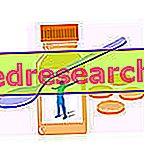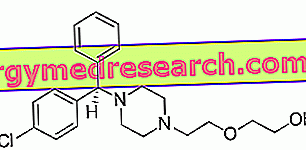What is favism?
Favism is a genetic anomaly that affects some enzymes contained in red blood cells. Known since ancient times as a "bean disease", this disease, as can be seen from the word itself, entails the absolute necessity to avoid the intake of fava beans and other foods, such as peas and verbena, some drugs and particular substances.

Causes of favism
The intake of particular foods and substances could inhibit the G6DP enzyme, causing serious consequences for the organism, including acute hemolysis with jaundice.
The term "favism" is, however, improper, since in some people the clinical hemolytic reaction can also occur independently of the consumption of beans and peas.
However, in most cases, affected people cannot eat these legumes; moreover, other substances cannot be taken or inhaled, such as naphthalene and certain drugs, such as analgesics, antipyretics, antimalarials, salicylates, certain chemotherapeutic agents, quinidine, methylene blue, etc., which can aggravate the pre-existing condition.
The deficiency of the enzyme glucose-6-phosphate dehydrogenase, as we have seen, is the triggering cause that causes acute haemolysis with jaundice. In fact, the role played by this enzyme as a defense factor of erythrocytes from oxidation is known.
The drugs and substances mentioned above alter the oxidative balance, acting as pro-oxidants.
Symptoms and Complications
To learn more: Symptoms Favismo
The subject suffering from favism, after 12-48 hours from the ingestion of peas, fava beans or particular drugs, shows a yellowish complexion that sometimes tends to green, the ocular sclostas appear intense yellow, the dark urine. If favism manifests itself in severe form, the subject could have a cardiovascular collapse: jaundice is caused by a high concentration of bilirubin in the blood, a catabolic (waste) product of hemoglobin contained in red blood cells. If jaundice progresses, the disease could develop into the most severe form of kernicterus (bilirubin encephalopathy: bilirubin is deposited in the brain, resulting in brain damage and possible mental retardation).
Furthermore, haemolytic anemia may occur not only as a result of taking the prohibited substances in this disease, but also as a result of pneumonia, viral hepatitis, malaria and diabetic ketoacidosis.
Various forms of favism exist and, according to the gravity, the WHO (World Health Organization) distinguishes five levels:
- the first two express a severe deficiency (chronic haemolytic anemia / acute renal failure and intermittent hemolysis),
- the third represents a slight deficiency (hemolysis manifested only in case of contact with oxidizing substances - beans, peas, analgesic drugs, naphthalene, etc.),
- while the last two do not involve any dangerous clinical effect.
Incidence
The bean disease is transmitted hereditary with the X chromosome (as a recessive trait connected to the sex chromosome X): for this reason the males are more affected than the females, which are generally healthy carriers.
The deficiency of the G6DP enzyme is one of the most frequent enzyme deficiencies in the world, considering that it affects around 400 million people: 20% of affected people are of African race, although it is also widespread in Greece, Africa, Asia and Sardinia . It should be remembered, however, that in most cases favism remains asymptomatic (it has no consequences for the organism).
Cure and prevention
The only cure is prevention: the affected subjects must abstain scrupulously from the intake of beans and peas, since they contain pro-oxidant substances in the seeds (nearby and convicina); analgesic, antipyretic, antimalarial, methylene blue, naphthalene, sulfa drugs, NSAIDs and some antibiotics must be banned.
Blood transfusions, in the case of an acute haemolytic crisis, and dialysis for subjects suffering from renal insufficiency, are vital.
In some severe cases, the removal of the spleen could be the only solution: it is precisely at the level of the spleen, in fact, that the red blood cells are destroyed.
Careful and thorough diagnosis of the disease is essential before adopting any treatment: the diagnostic test looks for the enzyme glucose-6-phosphate dehydrogenase inside the erythrocytes, highlighting even the most minor deficiencies.
Conclusions
Unfortunately, the possible variants of the bean disease are so many, and the researches so little in-depth, that there is still a clear concern about the possible foods, drugs and substances that are really dangerous for the affected subjects: in some cases, it almost seems that only the beans are really involved.
According to some ancient legends, favism was also linked to spiritual factors: it seems that the beans were somehow connected to the World of the Dead and were considered a symbol of impurity and decomposition.



